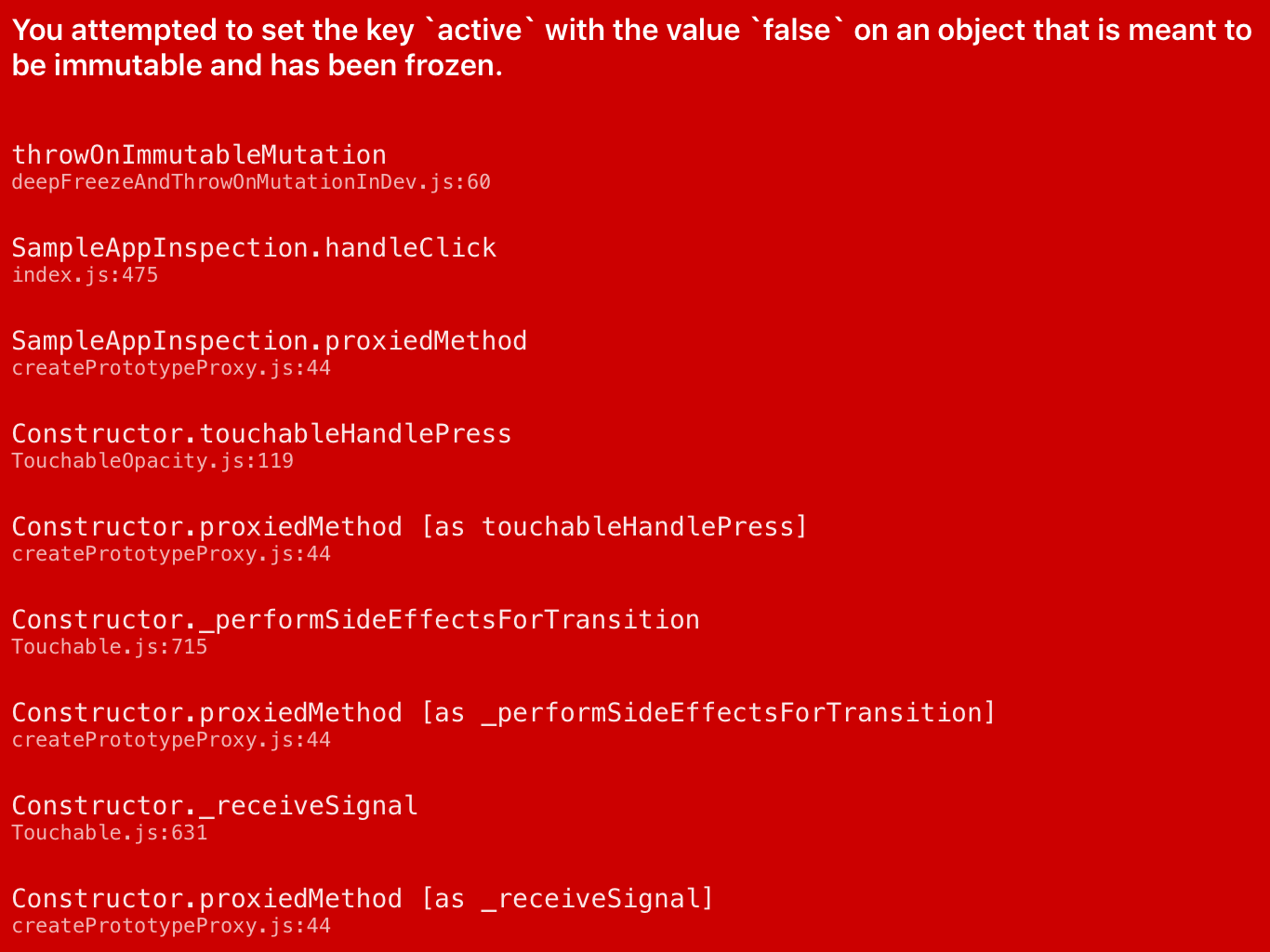In the following example:
MapViewdisplays elements of aListViewas annotations- Clicking on a
ListViewelement should result in painting it in blue color. - Bonus if the
MapViewandListViewefficiently use the state object
Modifying the DataSource of ListView seems to cause the conflict when the active attribute gets modified:
You attempted to set the key 'active' with the value 'false' on an object that is meant to be immutable and has been frozen.
What is the right way of setting the state?
'use strict';
import React, {Component} from 'react';
import {AppRegistry,View,ListView,MapView,Text,TouchableOpacity} from 'react-native';
var annotations = [
{
title: 'A',active: false,latitude: 45,longitude: 26,latitudeDelta: 0.015,longitudeDelta: 0.015,
},{
title: 'B',active: false,latitude: 49,longitude: 14,latitudeDelta: 0.015,longitudeDelta: 0.015,
},{
title: 'C',active: false,latitude: 26,longitude: 25,latitudeDelta: 0.015,longitudeDelta: 0.015,
}
]
class SampleApp extends Component {
constructor(props) {
super(props);
var ds = new ListView.DataSource({
rowHasChanged: (row1, row2) => row1 !== row2,
});
this.state = {
region: annotations[0],
annotations: annotations,
dataSource: ds.cloneWithRows(annotations)
};
}
handleClick(field) {
if (this.previousField) {
this.previousField.active = false;
}
this.previousField = field;
field.active = true;
this.setState({
region: field,
});
}
renderField(field) {
let color = (field.active == true)?'blue':'yellow';
return (
<TouchableOpacity onPress={this.handleClick.bind(this,field)}>
<Text style={{backgroundColor:color,borderWidth:1}}>{field.title}</Text>
</TouchableOpacity>
);
}
render() {
return (
<View style={{flex:1,flexDirection:'column',alignSelf:'stretch'}}>
<MapView
style={{flex:0.5,alignSelf:'stretch',borderWidth:1}}
region={this.state.region}
annotations={this.state.annotations}
/>
<ListView
dataSource={this.state.dataSource}
renderRow={(field) => this.renderField(field)}
/>
</View>
);
}
}
AppRegistry.registerComponent('SampleApp', () => SampleApp);

